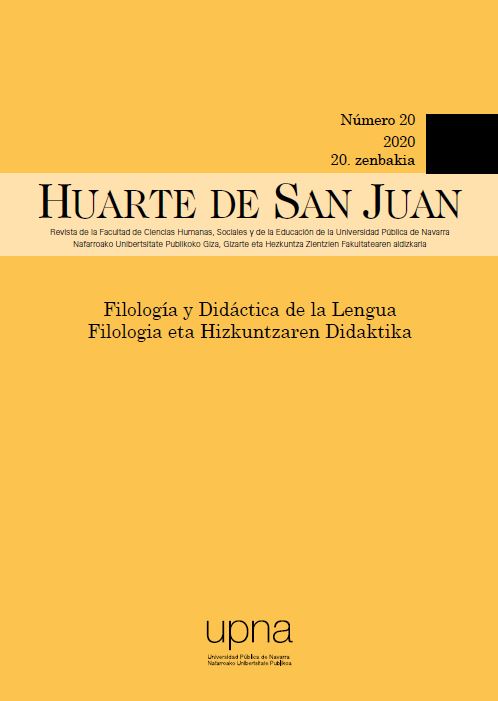A pilot study of the flipped classroom approach in higher education
DOI:
https://doi.org/10.48035/rhsj-fd.20.1Keywords:
Flipped classroom, teaching, learning, grammar, student-centred approachAbstract
Teaching and learning grammar have become arduous tasks in the English classroom. On the one hand, students feel they are studying the same topics repeatedly. Teachers, on the other one, think students are not able to acquire the grammatical contents of the syllabus. As a direct consequence, it can be assumed it is high time to change the traditional methodology and introduce new approaches which allow us to involve students in their learning process. This paper is aimed at demonstrating the effectiveness of using the flipped classroom approach when teaching grammar. As it is a learner-centred model, students actively expose to contents at home and the in-class time is used to do tasks related to the previously worked contents. The instrument employed for this study is a questionnaire designed to know students’ opinion about a flipped experience implemented in the English classroom. The results show that this teaching model can be a good option to avoid students’ demotivation when teaching English grammar.
Downloads
References
Bergmann, J. & Sams, A. (2012). Flip your classroom: Reach every student in every class every day. Washington DC: International Society for Technology in Education.
Bloom, B. S. (Ed.). (1956). Taxonomy of educational objectives. New York: David McKay Company Inc.si.
Brown, J. D. (2001). Using surveys in language programs. Cambridge: Cambridge University Press.
Bueno-Alastuey, M. C. & Andrés Galar, I. (2017). Flipping the EFL classroom in a secondary education setting: Students’ perceptions and academic performance. Huarte de San Juan. Filología y Didáctica de la Lengua, 17, 2017, 35-57.
Eastwood, J. (2002). Oxford guide to English grammar. Oxford: Oxford University Press.
Flipped Learning Network. (2014). The four pillars of F-L-I-PTM. Flipped Learning Network. (FLN). Retrieved from http://flippedlearning.org/cms/lib07/VA01923112/Centricity/Domain/46/FLIP_handout_FNL_Web.pdf
Harmer, J. (2007). How to teach English. Harlow: Pearson Education.
Kvashnina, O. S. & Martynko, E. A. (2016). Analyzing the potential of flipped classroom in ESL teaching. International Journal of Emerging Technologies in Learning (IJET), 11(03), 71-73.
Lage, M. J., Platt, G. J. & Treglia, M. (2000). Inverting the classroom: A gateway to creating an inclusive learning environment. The Journal of Economic Education, 31, 30-43.
Larsen-Freeman, D. (2001). Grammar. In R. Carter & D. Nunan (Eds.), The Cambridge guide to teaching English to speakers of other languages (pp. 34-41). Cambridge: Cambridge University Press.
Latham-Koenig, Ch. & Oxenden, Cl. (2013). English file. Intermediate. Oxford: Oxford University Press.
Madrid, D. & Bueno, A. (2005). Classroom research. In N. McLaren, D. Madrid & A. Bueno, TEFL in Secondary Education (pp. 646-647). Granada: Editorial Universidad de Granada.
Mazur, E. (2009). Farewell, lecture? Science, 323, 50-51.
Ms EOI Teacher (2014, November 29). Relative clauses. [Video file]. Retrieved from https://youtu.be/kv1NSyyDT-M
Sung, K. (2015). A case study on a flipped classroom in an EFL content course. Multimedia-Assisted Language Learning, 18(2), 159-187.
Walvoord, B. E. & Anderson, V. J. (1998). Effective grading: A tool for learning and assessment. San Francisco: Jossey-Bass.
Downloads
Published
How to Cite
Issue
Section
License
All articles are published under a Creative Commons (BY-NC-ND 4.0) license. Each article will be assigned a DOI.
Authors retain copyright of their work and grant the journal the right to the first publication. Authors can sign additional agreements to non-exclusive distribution of the published version of the article (for example, in an institutional repository) as long as appropriate attribution to the original publication is provided. Articles can be uploaded to institutional repositories immediately after publication.
Electronic distribution of the articles (for example, academic social networks or personal webpages) is allowed and encouraged.
The journal reserves the right to publicise the work in social networks and other electronic means.







